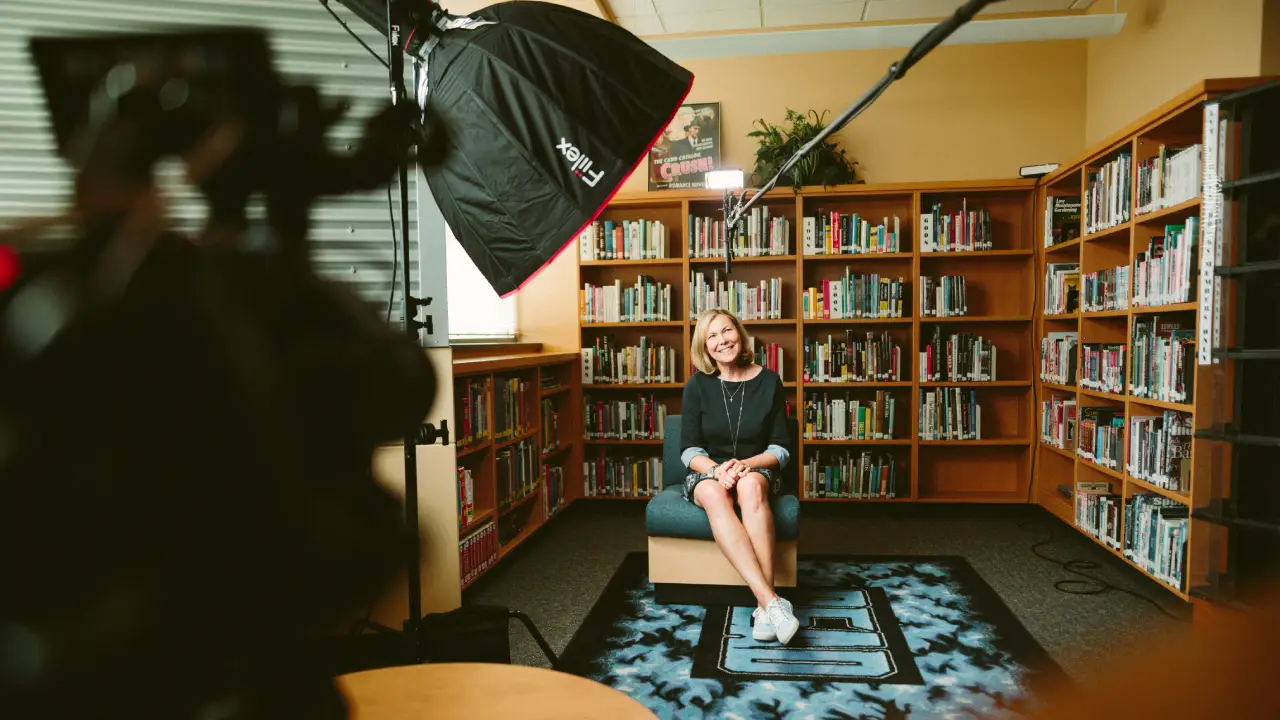When preparing for a job interview, one of the most crucial aspects to consider is your attire. What you wear can significantly influence the first impression you make on potential employers. A screening interview is often the first interaction you have with a recruiter or hiring manager, making it essential to dress appropriately. In this comprehensive guide, we will explore what to wear for a screening interview, providing you with tips, outfit recommendations, and insights into how your attire can impact your chances of success.
Understanding the Screening Interview
Before diving into outfit choices, it’s important to understand what a screening interview entails. A screening interview is typically a preliminary conversation aimed at assessing a candidate’s qualifications and fit for a specific role. Unlike traditional interviews, which may delve deeper into skills and experiences, screening interviews often focus on your resume, general background, and availability. These interviews can occur in person or virtually, making it vital to dress appropriately for both formats.
The Importance of First Impressions in Screening Interviews
First impressions are formed within seconds, and your attire plays a significant role in how you’re perceived. Dressing well not only demonstrates professionalism but also shows that you respect the opportunity and are serious about the position. According to research, candidates who dress appropriately are often viewed as more competent and trustworthy. Therefore, investing time in choosing the right outfit can be a game-changer in your job search.
Research the Company Culture
One of the most effective ways to determine what to wear for a screening interview is to research the company’s culture. Different industries and organizations have varying expectations regarding dress codes. Here are some tips for researching the company’s attire norms:
- Visit the Company Website: Check the “About Us” or “Careers” section for insights into the company’s values and culture. Some companies feature images of employees, which can give you a sense of their dress code.
- Utilize Social Media: Platforms like LinkedIn, Instagram, and Facebook can provide a glimpse into the company culture. Look for posts featuring employees at work or company events.
- Read Employee Reviews: Websites like Glassdoor can offer insights into the company culture and dress expectations from current and former employees.
- Network: If you have contacts within the organization or industry, reach out to them for advice on appropriate attire.
General Guidelines for Screening Interview Attire
Once you have a sense of the company culture, you can better decide what to wear. Here are some general guidelines to keep in mind:
1. Dress Appropriately for the Role
Consider the position you are applying for when choosing your outfit. If you’re interviewing for a corporate role, opt for more formal attire. In contrast, if you’re applying for a position at a startup, business casual may be more acceptable.
2. Prioritize Professionalism
Regardless of the company’s dress code, professionalism should always be your priority. Avoid clothing that is too casual, such as jeans, t-shirts, or flip-flops. Instead, aim for polished, well-fitted clothing that conveys competence.
3. Choose Neutral Colors
Neutral colors such as black, navy, gray, and white are generally safe choices for interview attire. These colors convey professionalism and allow you to stand out without being distracting. You can add a pop of color with accessories, but keep it subtle.
4. Keep Accessories Minimal
While accessories can enhance your outfit, it’s essential to keep them minimal. Avoid statement jewelry or overly flashy items that can distract from your overall appearance. Opt for simple pieces that complement your attire instead.
5. Pay Attention to Grooming
Personal grooming is just as important as your attire. Ensure that your hair is neat, nails are clean, and if applicable, facial hair is well-groomed. A polished appearance will enhance your overall impression.
Specific Attire Recommendations for Screening Interviews
Now that we’ve covered general guidelines, let’s dive into specific outfit recommendations for both women and men for screening interviews.
For Women
- Business Professional: A tailored blazer paired with a blouse and dress pants or a knee-length skirt is a classic choice. Opt for neutral or soft colors to convey professionalism.
- Business Casual: If the company has a more relaxed dress code, you might consider a nice blouse with dressy slacks or a professional dress. Ensure that the outfit is still polished and appropriate for an interview.
- Footwear: Choose closed-toe flats or low heels that you can comfortably walk in. Avoid overly high heels or casual shoes like sneakers.
- Accessories: Keep jewelry minimal—simple earrings and a classic watch work well. A structured handbag can also enhance your professional look.
For Men
- Business Professional: A well-fitted suit paired with a button-up shirt and a tie is a standard choice for corporate interviews. Opt for neutral colors like navy, gray, or black.
- Business Casual: If the company has a more relaxed culture, consider dress pants with a collared shirt, possibly adding a blazer for a polished touch. Ties may be optional in this setting.
- Footwear: Choose polished dress shoes that match your belt. Avoid sneakers or overly casual shoes, even in a business casual setting.
- Accessories: A classic watch can elevate your outfit, while a belt should match your shoes. Keep other accessories minimal to maintain a professional appearance.
Virtual Screening Interview Attire
In today’s digital age, many screening interviews are conducted virtually. Dressing appropriately for a virtual interview is just as important as in-person meetings. Here are some tips:
1. Dress Professionally from the Waist Up
Even though you may be at home, it’s essential to dress as if you were attending an in-person interview. Wear a professional top, such as a button-up shirt or a blouse, paired with dress pants or a skirt. Avoid wearing pajamas or overly casual clothing, even if they aren’t visible on camera.
2. Pay Attention to Your Background
Choose a quiet, clutter-free space for your virtual interview. A neutral background, such as a plain wall or a tidy office area, is ideal. Ensure that your camera is positioned at eye level to create a more engaging conversation.
3. Check Your Lighting
Good lighting is crucial for virtual interviews. Natural light is best, so try to position yourself facing a window. If that’s not possible, use a lamp to ensure your face is well-lit without harsh shadows.
4. Test Your Technology
Before the interview, test your video and audio equipment to ensure everything works smoothly. Familiarize yourself with the platform being used for the interview, whether it’s Zoom, Skype, or another service.
Dress for Confidence
Your attire can significantly impact your confidence levels during screening interview. Dressing well not only makes you look professional but also can make you feel more self-assured.
1. How Attire Affects Self-Esteem
Research indicates that dressing well can enhance your self-esteem and performance. When you feel good in your outfit, you are more likely to project confidence and engage effectively with the interviewer.
2. Dressing for the Role You Want
Consider dressing slightly more formally than the role you are applying for. This shows that you are taking the opportunity seriously and are eager to make a positive impression.
Screening Interview Outfit Ideas for Different Industries
When preparing for a screening interview, understanding the nuances of industry-specific attire can give you a significant advantage. Each industry has its own culture and expectations, which influence what is considered appropriate attire.
Tech Industry
- Women: A stylish blazer over a simple top with dark jeans and ankle boots can convey a modern yet professional look.
- Men: Opt for dress pants with a collared shirt and no tie; pair with clean sneakers or loafers for a polished casual vibe.
Creative Industries
- Women: Consider a trendy dress or a relaxed fit top with tailored pants, complemented by fashionable flats.
- Men: A smart casual look with tailored shorts, a colorful button-up, and loafers can work well in creative environments.
Corporate Finance
- Women: A tailored, dark-colored suit with a silk blouse and closed-toe heels is ideal for a formal setting.
- Men: A well-fitted navy or gray suit with a conservative tie and polished dress shoes is a must.
Final Tips for Success in Screening Interviews
As your interview date approaches, here are some last-minute tips to ensure you are fully prepared:
1. Plan Your Outfit in Advance
Lay out your clothing and accessories the night before the interview to avoid any morning stress. Ensure that everything is clean and pressed.
2. Practice Your Interview Skills
While your attire is important, it’s equally essential to prepare for the interview itself. Research common interview questions and practice your responses to feel more confident on the day.
3. Personal Grooming and Hygiene
Don’t overlook the importance of personal grooming. Make sure your hair is neat, nails are clean, and if applicable, facial hair is well-groomed. A polished appearance can enhance your overall impression.
4. Arrive Early or Log In Early
If the interview is in person, arrive at least 10-15 minutes early. For virtual interviews, log in a few minutes early to ensure your technology is working and to settle in before the conversation starts.
Real Life Candidate Experiences For What To Wear For Screening Interview
Candidates often share their experiences regarding what they wore to screening interviews, highlighting the impact of their clothing on their confidence and the impression they made on potential employers. Here, we explore some real-life stories that shed light on the importance of dressing appropriately for screening interviews.
1. The Power of Professionalism: Sarah’s Experience
Sarah, a recent college graduate, was interviewing for a marketing position at a well-known firm. She opted for a tailored navy suit, complete with a crisp white blouse and classic pumps. During her interview, she noticed that the interviewers were dressed in business casual attire.
However, Sarah felt her professional appearance set a positive tone. She later received feedback that her polished look contributed to her strong first impression, ultimately helping her secure the job.
2. Embracing Company Culture: Mark’s Journey
Mark had a screening interview with a tech startup known for its casual dress code. Understanding the company culture, he chose to wear smart casual attire: dark jeans, a button-up shirt, and a blazer. He felt comfortable and confident during the interview, which allowed him to focus on showcasing his skills.
The hiring manager later commented on how Mark’s outfit perfectly matched the company’s vibe, reinforcing the importance of aligning your attire with the organizational culture.
3. The Risk of Casual: Emily’s Lesson
Emily approached her screening interview with a laid-back mindset and decided to wear a trendy graphic t-shirt and jeans. As the interview progressed, she realized that the position was more formal than she had anticipated.
The interviewers were dressed in business attire, and Emily felt out of place. Although she performed well in the interview, she didn’t receive an offer. Reflecting on the experience, Emily learned the hard way that dressing appropriately is crucial, regardless of personal style preferences.
4. The Comfort Factor: Jason’s Smart Choice
Jason was preparing for a virtual screening interview and opted for a comfortable yet professional outfit. He wore a smart polo shirt paired with blazer and dress pants, ensuring he looked polished from the waist up while still feeling relaxed.
During the interview, he felt confident and engaged, which translated into a positive conversation. Jason’s choice highlighted the importance of balancing comfort with professionalism, especially in a virtual setting.
5. A Last-Minute Change: Lisa’s Story
Lisa had initially planned to wear a casual dress for her screening interview. However, the night before, she decided to review the company’s website and social media presence. Noticing that most employees wore business formal attire, she quickly altered her outfit choice to a tailored dress and blazer.
This last-minute change made her feel more confident, and she received positive feedback from the interviewers. Lisa’s experience emphasizes the value of researching the company’s culture and adjusting your attire accordingly.
You Can Also Read:
Can I Wear a Dress Shirt To an Engineering Job?
FAQs On What To Wear for Screening Interview
For a screening interview, it’s generally advisable to wear business formal attire. This typically includes a suit for men, paired with a dress shirt and tie, and for women, a tailored dress or a blouse with dress pants or a skirt. Even if the interview is online, dressing formally can help convey seriousness and professionalism.
While it may not be strictly necessary, wearing a suit is often recommended, especially if you’re unsure about the company’s dress code. A suit can help you make a strong first impression and shows that you take the opportunity seriously.
Absolutely! For online interviews, while the focus may be on your upper half, it’s wise to dress fully in professional attire. This not only helps you feel more confident but also prepares you for any unexpected situations where you might need to stand up




